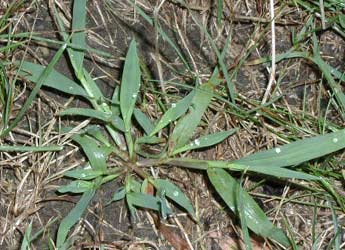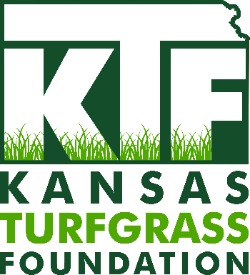Crabgrasses (Digitaria spp.)

Smooth crabgrass (D. ischaemum) and large crabgrass (D. sanguinalis) are warm season annuals that reproduce primarily by seeds. Large crabgrass can also reproduce by long, rooting tillers. Seeds of both plants can germinate from mid spring through summer when soil temperatures at the 1/4” level are 55° to 60°F for 5 to 10 consecutive days and can continue germinating in soil temperatures to 95°F. These plants reproduce from seeds found in the soil throughout much of the growing season when moisture and light are present and soil temperatures are warm. Both crabgrasses are branched and grow upright or prostrate. Large crabgrass is normally mat forming, often has purple stems, and can grow to more than 3 feet in height. Smooth crabgrass is usually 15 inches or less. The leaves of large crabgrass are pale blue green, hairy on both sides, and with edges that may be rough. They are flat, sharply pointed, 1/4 to 2/5 inch wide, and 2 to 6 inches long. Smooth crabgrass leaves are normally dull green, sometimes purple tinged, and with margins that may be rough. They are sharply pointed, sparsely hairy near the base, 1 to 4 inches long, and 1/8 to 1/4 inch wide. Large crabgrass flowers are borne in a raceme with 3 to 13 purplish finger-like spikes up to 6 inches long. They occur in whorls at end of stout stalk during August and September. The flowers of smooth crabgrass are borne in a raceme with 2-to-6 finger-like, purplish spikes up to 4 inches long, and at end of flowering stalk. They also occur August and September.
Occurrence
Both crabgrasses can be found in most warm, moist, fertile lawns in full sun where turf is thin or mowed too short. They tolerate hot, dry, compacted soils after establishment, and may spread aggressively to crowd out desirable grasses.
Non-Chemical Control
Maintaining a dense, healthy lawn through proper turf selection, establishment, and maintenance is the recommended non-chemical control for the crabgrasses. Avoid light, frequent irrigation, spring cultivation, short mowing, and summer fertilization. They can also be hand-pulled or mechanically removed.
Chemical Control
Apply preemergence herbicides before germination when soil temperatures stabilize at 50 - 55°F for several consecutive days; postemergence herbicides should be applied when plants are small.



